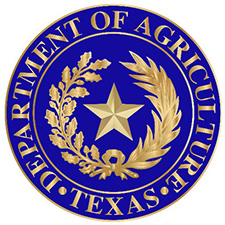(AG Insider) Farmers will get cash payments of up to $250,000 apiece — possibly more, depending on the rules — to survive an estimated 20-percent drop in farm income this year due to the coronavirus pandemic.
President Trump announced $16 billion in direct agricultural aid and said additional money might be be spent this summer to bolster the sector.
In addition, the government will spend $3 billion to buy fruit, vegetables, dairy and meat, which will then be donated to food banks and other charities. The food donations will include a form of the “harvest box” that the administration has repeatedly proposed.
Market prices for most agricultural commodities dropped sharply as the pandemic spread worldwide; wheat and rice are exceptions because of panic buying. Low prices are forecast to persist for months.
Stay-at-home orders disrupted processing and marketing channels by shutting down restaurant sales. Meatpackers slowed production at some plants or closed them temporarily for sanitization or because of illness and absenteeism.
“I’m announcing … a $19 billion relief program for our great farmers and ranchers as they cope with the fallout of the global pandemic,” said Trump at the White House on Friday. The USDA will receive additional funding in July “to continue help” to producers, he said.
Agriculture Secretary Sonny Perdue said the USDA would move as quickly as possible to write the rules for the Coronavirus Food Assistance Program, accept applications and issue checks. “I’m hoping we can get checks out by the end of May.”
Like Trump, Perdue told reporters, “I do anticipate we will need additional money” beyond the $19 billion announced on Friday.
Farmers and ranchers will be eligible for up to $125,000 per commodity with an overall payment limit of $250,000 per person or entity, said the USDA. The only ineligible people would be those with more than $900,000 in adjusted gross income and those who get more than 25 percent of their income outside of agriculture.
The payment limits are double the cap set by Congress for traditional farm subsidies, and may be as porous, said critics. Spouses are automatically eligible for crop subsidies, so married couples can collect twice as much as the individual payment limit.
The USDA has not decided if spouses will be eligible automatically for coronavirus aid. If they are, the limit per farm couple would be $500,000. If producers are partners in other farming entities, they could receive money from federal payments to those entities.
Cattle producers would get nearly a third of the coronavirus money, $5.1 billion, according to North Dakota Sen. John Hoeven, who chairs the Senate Appropriations subcommittee on agriculture.
Row crop farmers would get $3.9 billion, dairy farmers $2.1 billion, specialty crop growers $2.1 billion, hog farmers $1.6 billion and producers of “other crops” $500 million, he said.
The USDA provided little beyond the top-line numbers on Friday and said details of the program would be announced later.
“Critical details” are lacking to assure the money is distributed as specified by Congress, said Eric Deeble of the National Sustainable Agriculture Coalition, a small-farm advocate.
Lawmakers said aid should go to specialty crop growers; farmers who supply local food systems, including farmers markets, restaurants and schools; and livestock producers, including dairy farmers.
“While every farmer harmed by the pandemic is deserving of assistance, there can be no justification for providing so little for the farmers that provide our families real food grown for them in their own communities, while simultaneously doubling payment limits for commodity growers and excluding safeguards that would prevent payments to millionaires,” said Deeble.
In its structure, the USDA coronavirus program is similar to the administration’s improvised trade-war assistance to agriculture, which were weighted heavily toward cash payments to producers with much smaller amounts spent to purchase, and give away, produce, nuts, dairy and meats impacted by retaliatory tariffs.
Producers received $26 billion in trade-war cash in two years, a welcome amount in farm country, although there were complaints the money was skewed toward particular crops and favored parts of the country to the disadvantage of other crops and farmers.
Because payments are linked to volume of production, large farmers got the major share of trade war aid, said the Environmental Working Group, which prefers land stewardship spending. EWG said its analysis of USDA records showed that Smith and Sons, a cotton and grain operator in Texas, received $1.45 million trade war aid in 2019.
In three-month period in 2019, when $6 billion in aid was disbursed, half of the money went to the top 10 percent of farms, said EWG. “The biggest, richest farmers continue to get the most (trade war) money,” it said.
Farm and ranch groups celebrated the prospect of coronavirus payments. “While the relief funds that have been allocated to USDA by Congress represent a start to stabilizing the industry, there is much more work to be done to protect the cattle producers who are an essential component of the agriculture industry and the anchor for rural America,” said Marty Smith, president of the National Cattlemen’s Beef Association.
President Dave Milligan of the National Association of Wheat Growers thanked USDA “for putting the program together so promptly.”
“We fear the lifeline so desperately needed will fall short of what is truly needed,” said Howard Roth, president of the National Pork Producers Council. USDA purchases of excess foods “will hopefully help move a backed-up supply of pork to those who need it” and allow meat packers to slaughter hogs that are ready for sale, said Roth.











